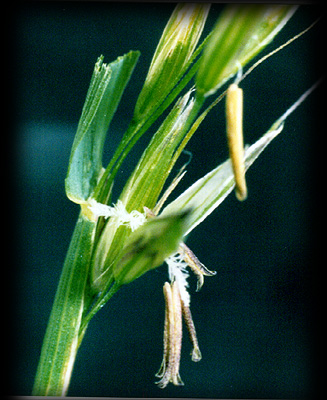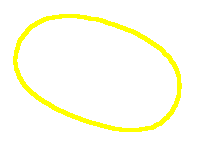
Insect pollinated flowers don't need to produce as much pollen as their wind pollinated relatives: there's always a good chance that the insect, having visited a flower of a particular species will fly off and visit another flower of the same type.
Wind pollinated flowers on the other hand depend on the vagaries of wind speed and direction. It is vital that these plants ensure that their pollen has the best chance of getting from the stamen of one flower to the stigma of another. This is reflected in their flower structure; stamens hang out, stigmas are feathery to provide a big catching surface and light weight pollen is produced in large amounts. This final design feature is one of the reasons why grass pollen is such a nuisance to the poor hay fever sufferer.
Why don't you look for grass flowers
send us your pictures to put into our
"Grass gallery"
All
Material Copyright © Anne Bruce
The anthers also are dangling out of the flower, this is to make sure that even the slightest gust of wind will blow pollen grains into the air.
Grass flowers depend on the wind to carry their pollen from flower to flower. Look again, closely at the grass flower ...
